“Two years ago, my colleagues and I conducted a study in which participants were residents of large cities aged 18 through 64. 67% of the respondents were not against playing to keep them busy while waiting or being stuck in a traffic jam. 65.7% of people noted the positive impact of gamification on brand reputation. Based on the figures obtained, the launch of game projects to solve marketing problems is a logical decision”, Founder of Hezzl.com
Business has been using promo-games for over 15 years (since the advent of the Internet and online sites). There’s a basic idea which still holds up: you can place a game on a boring website, and you will see the audience coming to get the opportunity to have a look at the rest of the content that is there. Now both websites and shops have become more fascinating. Instead of information sites and online stores, online services have appeared that provide more opportunities than just adding goods to the basket or reading the text.
Companies still continue to use mini-games to grab attention for a short time. The good thing is that you don’t have to make these mini-games yourself, and you don’t have to do a lot of redesigning the site for this. There were and are contractors (mostly game studios or creative agencies), which are not very expensive for any brand and will quickly make a mini-game, and placing it then is a mere formality.
However, there is a certain type of companies, Hezzl for instance, which have accumulated a portfolio of game templates of different genres and can easily customize them for different customers. Hence, a new phenomenon called template gamification was born – when all game rules, all gameplay are preserved with only brand elements change. Graphics are redrawn sometimes but it’s quick and easy. The question is, isn’t it bad when several brands have mini-games that are almost the same?
Let’s try to understand this, look at examples and discuss whether this is good for the brand and for the player.
Hezzl.com is a platform that allows brands to gamify marketing activities and education by launching game projects based on ready-made solutions and integrating them into existing games.
Why are games made similar?
When developing such mini-games, there’s an aim to have maximum coverage: the desire is to make a game that everyone will play, that will be understandable and at least a little familiar to any player.
There are not so many popular genres (especially among a wide audience, not gamers). The platformer genre is one of the oldest. It started with Mario, when personal computers either did not exist or they were still at a very early stage of development. Accordingly, since there are not so many popular “folk” genres, it means, on the one hand, that sooner or later genres will begin to repeat themselves. On the other hand, a developer can create an “engine” and within this genre make each next game for each brand faster and cheaper using already existing groundwork.
Platformer genre
Let’s see what characterizes the platformer genre. The hero usually runs forward (from left to right), jumps on the platforms, collects various bonuses accumulating the total number of points and can run into obstacles or fall down between the platforms and die. Then one life will burn out and he will start the level again. If all lives are burned, then the game will be completely over and the collection of points will stop.
Let’s look at the variations that have been implemented in Hezzl for different brands.
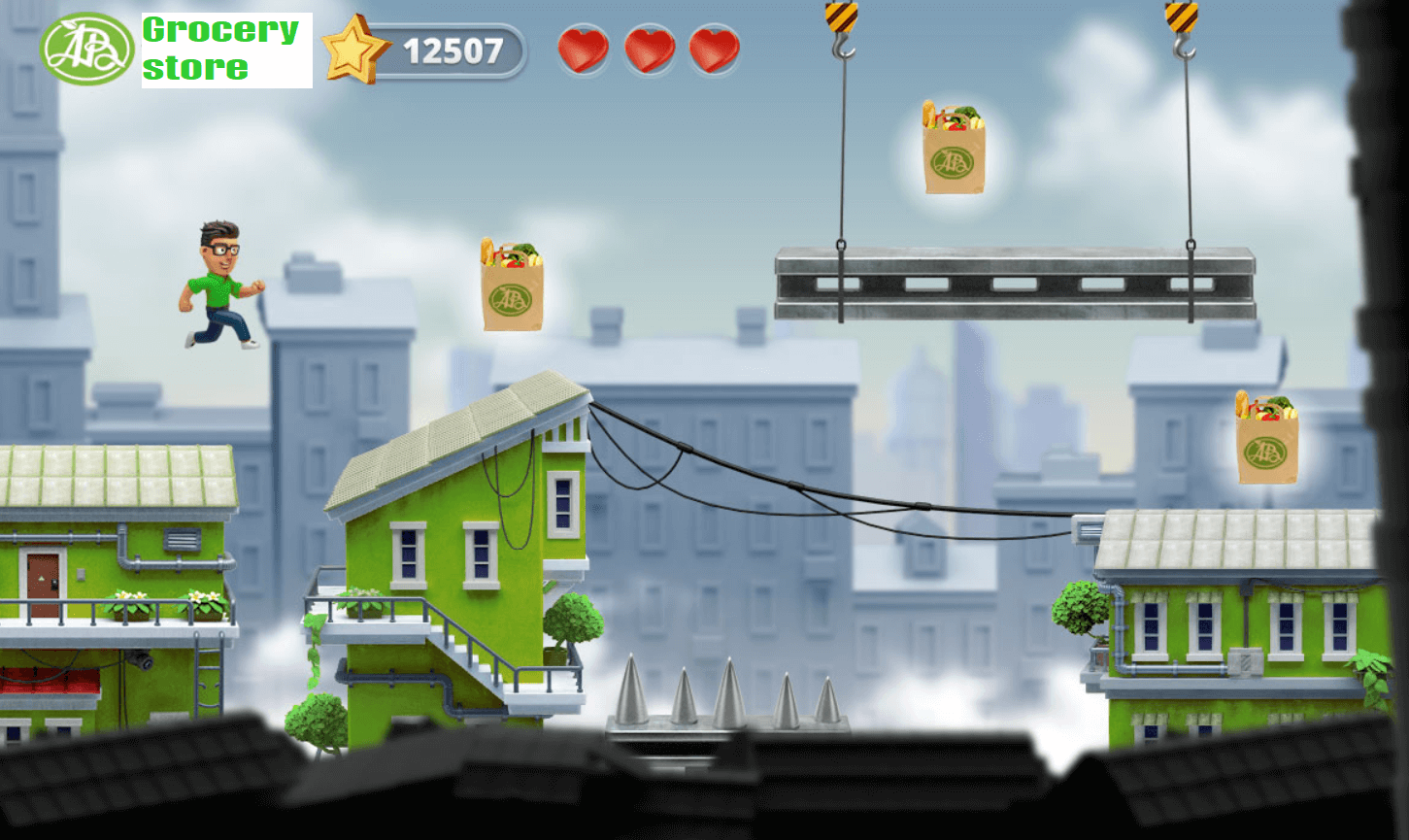
Promo-game “Quest” by one of the grocery stores.
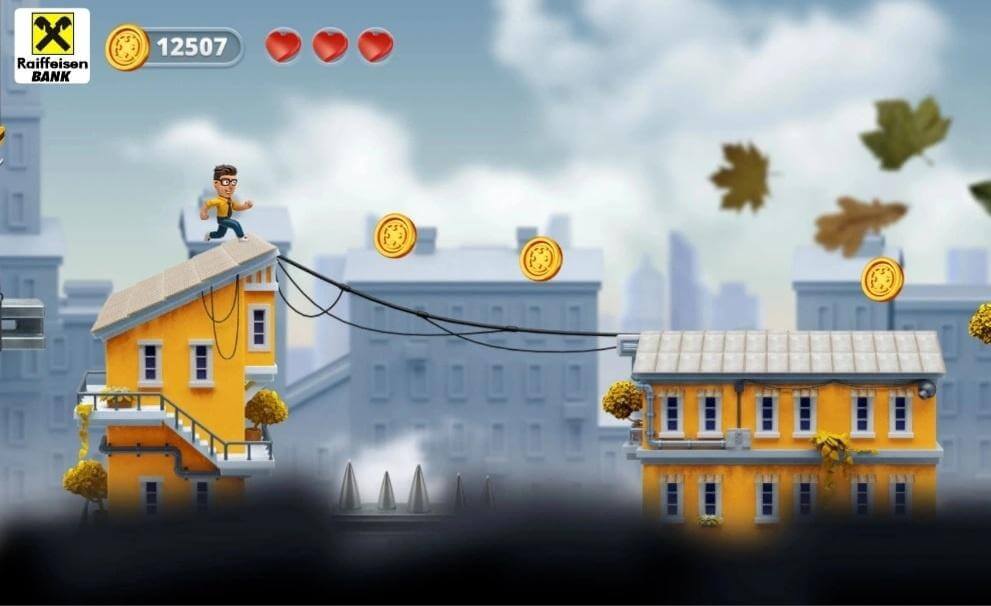
Promo-game “R-game” by Raiffaisen bank. The collected coins can be exchanged for real prizes from the “Discounts for You” privileges program.
We see that even the graphics of the city itself is the same, the surroundings are only repainted in the colors of the new brand.
What is the benefit for the developer?
Probably, it cannot be said that the benefit for the developer is quite obvious. For everyone, this is a project that is faster and cheaper. In this case, you can invest in high-quality graphics, which will serve many projects and will pay for itself a good many times.
What about a brand?
Benefit for the brand is simple – it gets proven mechanics. Such mechanics cannot fail: there is a fact that users have played such a certain number of times, played it repeatedly, it is not difficult for them to play it, it is possible to collect all the elements and rewards, and the game keeps getting better and better.
What’s the nuance from the players’ point of view?
Firstly, in case brands have quite different target audiences. For example, Raiffeisen, Greenpeace and grocery stores have different audiences. There is a high probability that Raiffeisen users who play this game will never see it again and will not see either the one about a grocery store or Greenpeace. If we assume that the audience is completely different, then there are no negative sides here.
Secondly, such projects can be delimited in time and, at least, they are not launched simultaneously. Even if users have already seen such a game (played or just saw it on the screenshots), they have already forgotten about it and will be happy to return to the game and play it again.
Below are a few more examples made on a similar “engine” and using similar graphics.

Promo-game “Non-fiery game” by Greenpeace
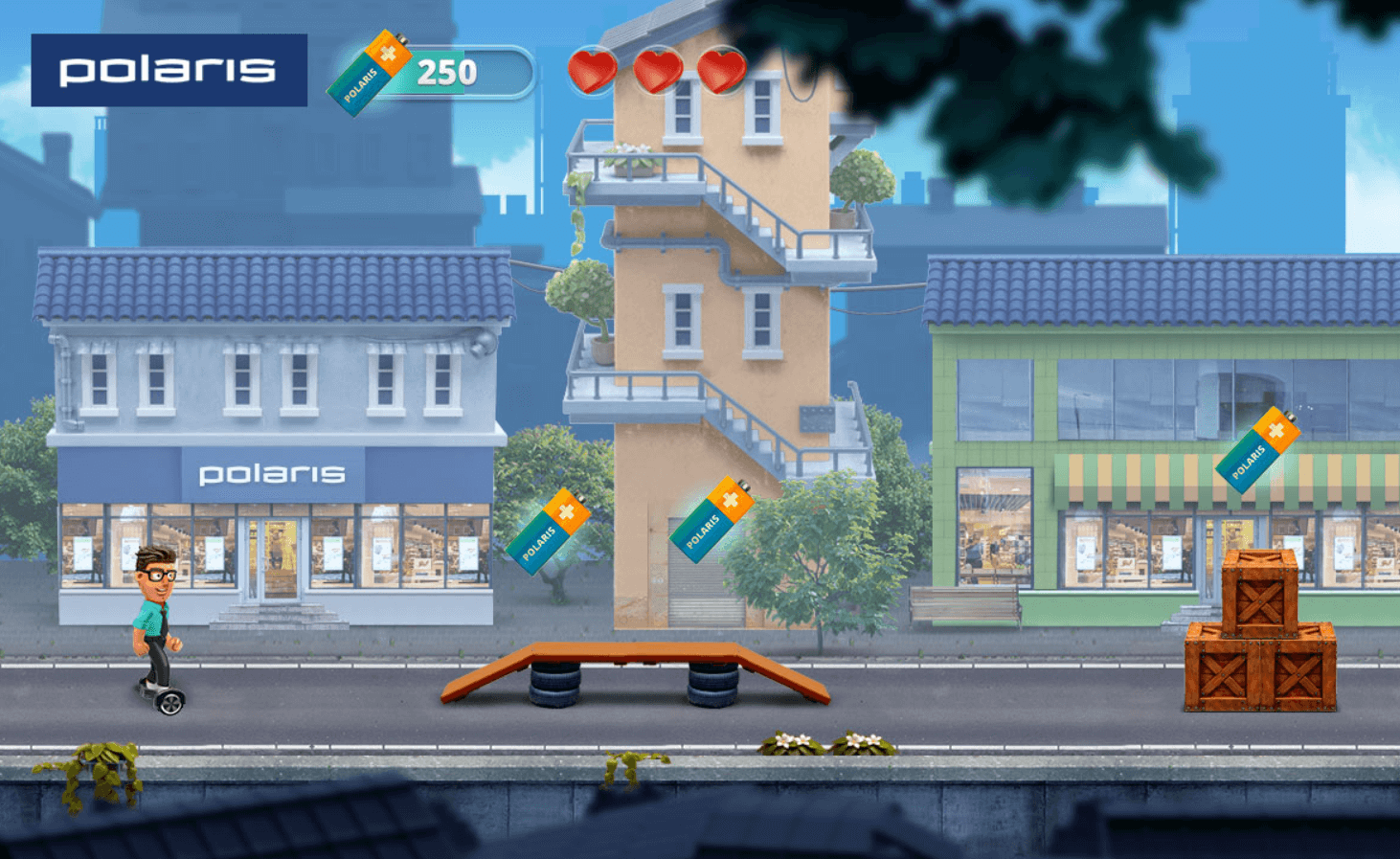
Promo-game “Win a segway” by Polaris, a consumer electronics store
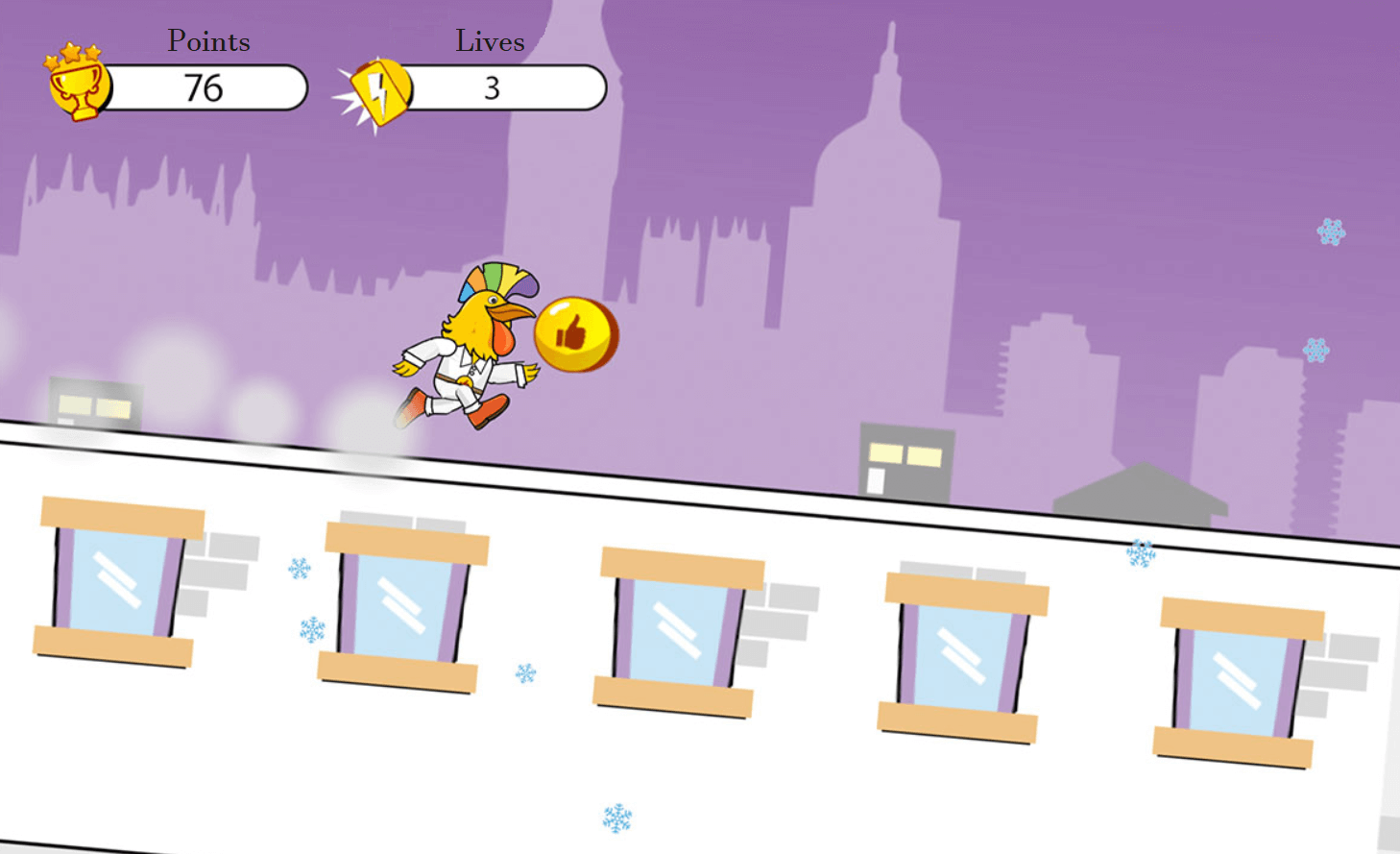
Promo-game “Run, Peter!” by one of the cell phone companies
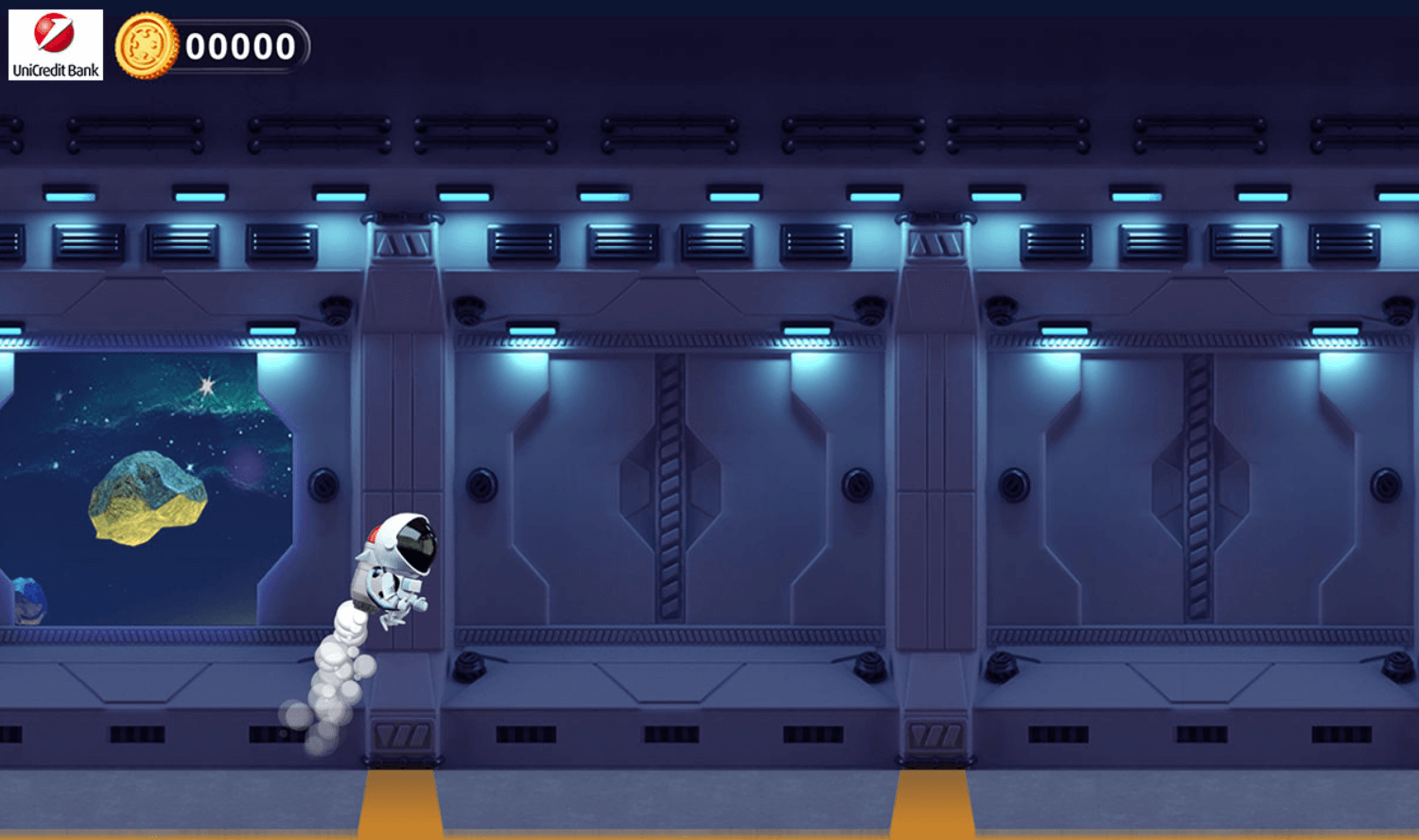
Promo-game “Into space together with UniCredit” by a Unicredit bank
Match 3 genre (three in a row)
Do not forget the match 3 genre (usually mentioned as “three in a row”). I think it’s the most popular genre in the world. These games are popular on a variety of platforms, both computer and mobile versions. If you look among the leaders of games, then about 10% of all games (among the more or less popular ones) are match 3.
These games are played for about half an hour per session. They are pretty simple. It’s quite difficult to lose playing them as you don’t have to run somewhere against the clock, you can just look at the screen and find which chips are more profitable to line up.
This is a good example of meditative gameplay that has been holding the top games for housewives and bored people with a mobile phone for many years. Such game mechanics in their abstractness perfectly fits almost any story. There are games where, using match 3, you can build cities, grow farms, clean up the streets, just collect some diamonds and go through the levels even without an explicit story. The graphics of such a game is quite clear and thematic. You can use almost any elements in it, including elements with a logo (which is quite simple and does not look alien compared to shooters or platforms).
Game rules
The rules of the game are simple: there is a playing field where, moving 1 chip at a time, you need to make 3 or more identical elements in a row. Chips stacked next to each other either disappear or explode, and the chips fall down from above; due to it, the configuration in the field changes. The ideal result, of course, is to have 3 and more. Usually, if the user manages to make 4 or 5 in a row, the effect is amplified and you’ll see an explosion. In this case, the player gets more points.
This genre has some strategic element: how should the field be prepared in order to get a big combination of many identical chips?
Let’s have a look at the examples below.
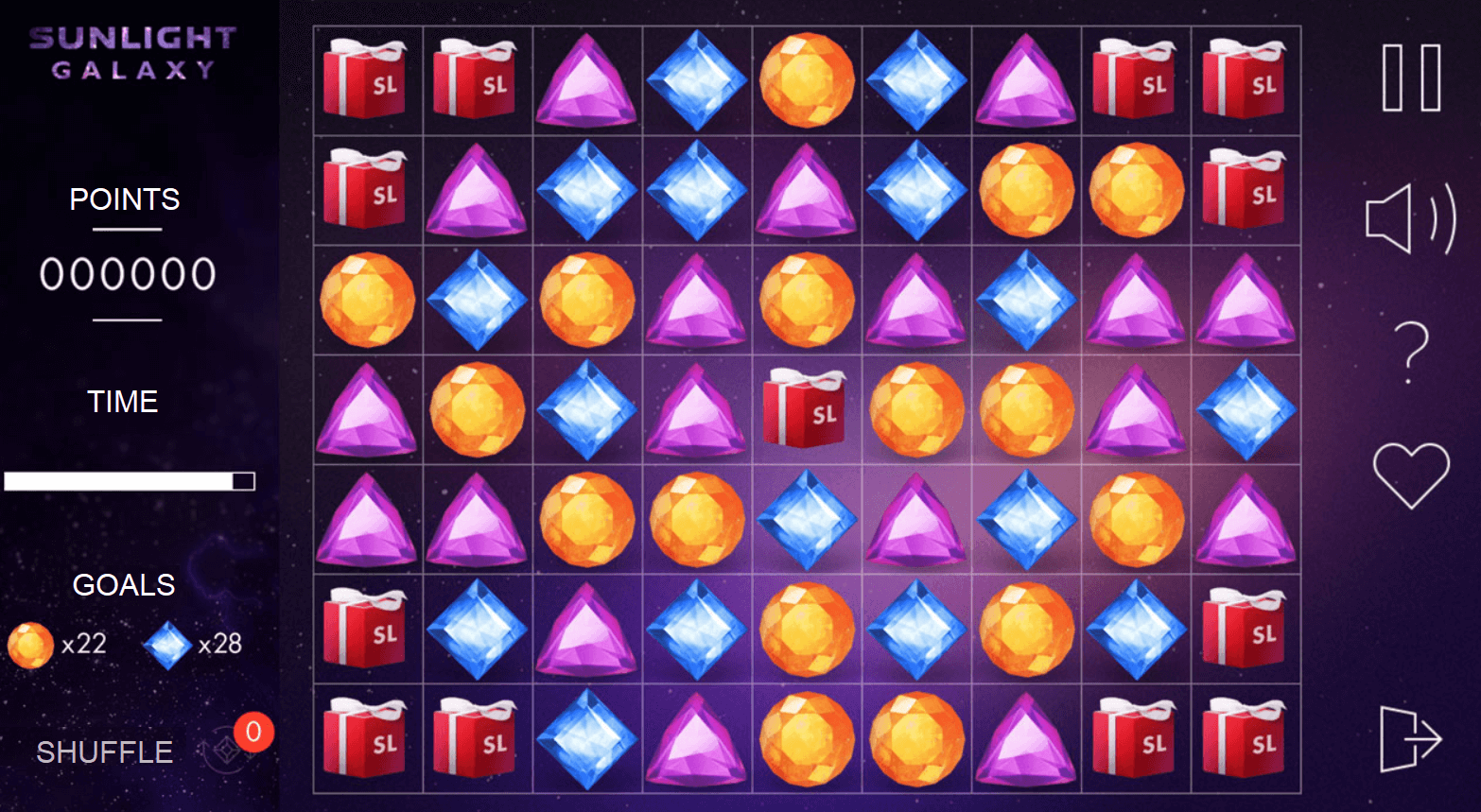
Mobile game “Sunlight Galaxy” from the jewelry store Sunlight. To participate in the game, you need to install the SUNLIGHT mobile application. You can win both discounts on store products and specific jewelry gifts.
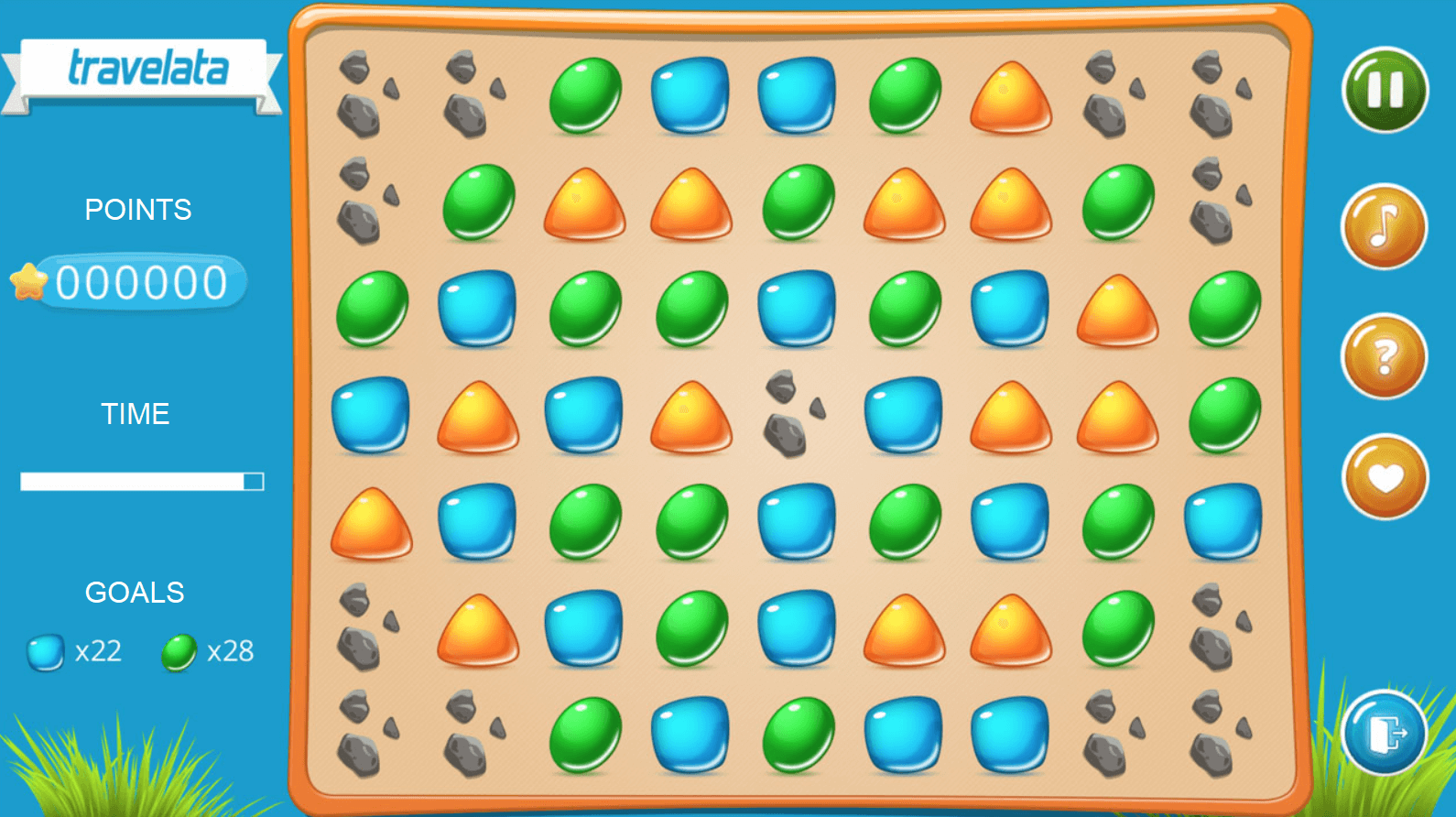
Promo-game “Perfect holiday” by Travelata, a travel agency
Obviously, all these games are also made on the same “engine”, but with a change in graphics. From the user’s point of view, there is no longer a feeling of a clone, because all match 3 games are somehow similar: there is a field everywhere and the rules of the game are the same.
This genre has an important nuance – you need to be able to create match 3 games. If you carefully look and think about it, you will notice that the distribution of all chips across the field is not accidental. To some extent, the game plays along with the player and the field is formed in such a way that he almost always has the opportunity to find 1 or more combinations. And if the player thinks even better and looks more carefully to find 2-3-step big combinations, he will be able to add them up and get some kind of additional bonus.
Games of this genre and the principles of building such mechanics have been polished for years. Each developer has his own algorithm; it is possible that Hezzl also has its own algorithm. If, in general, developers know how to make interesting match 3 games, it will make playing each next game feel quite sweet and familiar. However, it is definitely not advisable for any beginners to try to make such a game. It is very easy to get a boring and vapid version with lack of freedom; where you need to find several obvious moves, and after that you see the field updated because there are no new combinations.
Conclusion
Template mini-games are already a given. They already exist, they’ve been already deployed (both the most popular ones are copied, as well as simply ordered from developers that have ready-made “engines”). This path has its own complexity, so if you decide to go along this road, watch your step.
First, the players are not so stupid after all
Even if they may not have seen past games for other brands, one may still feel some clichés and generic approach to the game. A cloned product is bad not because it has been seen somewhere, but because, apart from minor changes in graphics and branding, it is not unique. The user may notice this.
Secondly, if cloned, then only the best
There is a high probability that the customer will not understand where a good game is and where is not. It’s easier to sell cheap fakes that are not really riveting. This actually forms positive cases that attract other brands that might have used a similar game. However, these other brands lack the vital part – they are weak at game design. As a result, such a game will fail to function; users will sleep at the wheel and eventually, with no positive emotions, will push it to the side. Therefore, the choice of such template mechanics becomes even more challenging.
Thirdly, it is worth considering – Is template gamification necessary? Why is it necessary to attract the user with a mini-game? What does this mini-game need to convey to the user?
Users do not play such games for hours these days. Rather, it’s realistic to obtain from 1 to 10 minutes of a player’s attention and, if he is a fan of this genre, we may aspire for a little more. However, they are as rare as dogs in space. Hence, it is important to answer the question: what do we want to spend this time for? Just play, jump around the houses and collect more coins? Apparently, the brand will not see this option as a sufficient value. In addition to the fact that it is crucial to provoke the user’s interest, it is also crucial to monetize him or brought somewhere in order to benefit from him. Therefore, it is esential to see the logic clearly. Why do you need a mini-game? Why this particular genre? What should the user see inside? What should he do? What’s the point of this? What actions will it turn into next?
The tasks of brand recognition and attracting attention, of course, are eternal but probably too abstract. Gamification and mini-games, as an interactive format, allow you to get more from the user, and not just that he spends a few minutes on the site, looks at a certain number of charts, and closes the website.


